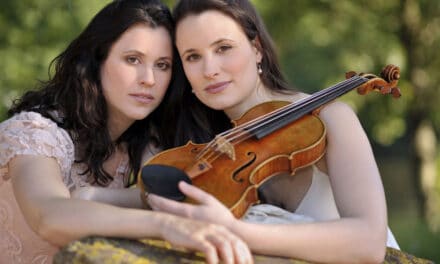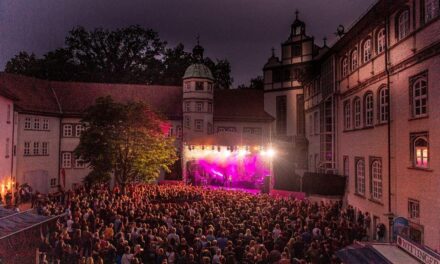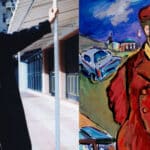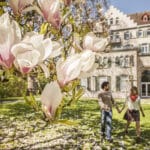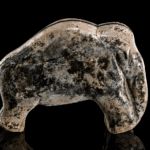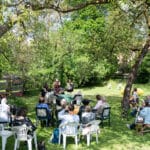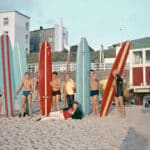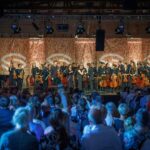"Between Bremen and Naples, between Vienna and Singapore, I have seen many a pretty town, towns by the sea and towns high up on mountains, and as a pilgrim I drank from many a fountain, which later gave me the sweet poison of homesickness. But the most beautiful town of all that I know is Calw on the Nagold, a small, old, Swabian Black Forest town." Hermann Hesse (1877 - 1962) wrote these lines in 1918 about his beloved hometown of Calw. It is thanks to the poet and Nobel Prize winner that the charm and beauty of this Black Forest town have been written about and made famous around the world. Anyone who walks through the streets of Calw today in the footsteps of the "Steppenwolf" - whether as a local or a tourist - will find much as the young Hesse saw and internalized it. If he could return to today's Calw, he would discover a modern town almost five times the size, in which much has changed.
Calw, the town on the water
The history and fortunes of the town, first mentioned in a document in 1075, are shaped by its location on the river. Squeezed into the narrow Nagold valley, the people of Calw have always had to come up with something. Agriculture was and still is hardly possible today, so the population turned to crafts and trade in the Middle Ages. Benefiting from its convenient location on the water and influenced by the Protestant work ethic, the people of Calw were so successful in this for centuries that the small town on the Nagold River became the most important economic center in Württemberg for a time with its timber and salt trade and textile production ("Calwer Compagnie") - in the 17th century it was half the size of Stuttgart and so financially strong that it supplied the ducal court with money. These economic heyday are, of course, long gone. What remains is a picturesque half-timbered town with over 200 listed houses, which reflects the former wealth of its citizens and provides a fantastic backdrop for one of the most beautiful and lively pedestrian zones in southern Germany.
Calw, the monastery town
What has remained, however, is the self-confidence of the people of Calw, from whose midst a large number of thinkers, scholars and artists have emerged, of whom Hermann Hesse is only the most prominent. The small town of Calw has always liked to turn the big wheel. In the High Middle Ages, it even wrote German history. It was the counts of Calw who founded the Hirsau monastery - a ruin that is now Calw's main tourist attraction alongside the Hesse memorials and is also known for the "Hirsau Monastery Summer". Under the brilliant and highly learned Abbot Wilhelm, the Benedictine abbey rose to become one of the largest and most influential monasteries in Germany in the 11th century and played a major role in the famous investiture dispute between the Pope and Emperor.
Tip:
Be sure to visit the unique monastery summer in Hirsau. Against the backdrop of the "St. Peter and Paul" ruins, you can experience pure culture at open-air concerts.
Calw, the city of culture
The cultural power of this small town can still be felt to this day. Music in particular has a long tradition within the town's walls. The Aurelius Boys' Choir of the town's music school has become one of the top boys' choirs and is a popular ambassador for the town of Calw on major European stages and even in Japan.
Artists, poets and thinkers have always felt at home in Calw. Great names such as Hermann Hesse, Rudolf Schlichter, Kurt Weinhold and Richard Ziegler have left their mark here to this day. With the regular Gerbersau Summer of Reading (July 2 to August 9), for example, the town pays homage to its famous son and poet Hermann Hesse with readings and the finest chamber music.
Hirsau Abbey is probably one of the most famous buildings in Calw. Whether on a professional guided tour or on your own, it is always worth exploring the historic buildings. The monastery museum is particularly worth a visit.
For all those who are more artistically inclined, there are countless museums, exhibitions and galleries.
Calw, the town between the Black Forest and Gäu
"The town is quite beautiful. But the mountains are so close from the west that you can almost throw a stone onto the market square from there." These lines were written by Professor Crusius from Tübingen in 1595. These observations, which are over 400 years old, have lost none of their validity as far as Calw's scenic location is concerned. Its charm lies in the fact that the town lies exactly on a geological boundary that follows the course of the Nagold at a slight offset and marks the transition between two completely different landscapes: The old town itself and its western districts lie in the Black Forest, which almost reaches the market square in the town forest. But as soon as you leave the Nagold valley to the east, the Gäu begins. While the Altburg area is dominated by dark green and extensive coniferous forests, the area around Stammheim is made up of loose rains, hedges and orchards alternating with sparse forest islands. The green belt around Calw is a paradise for hikers and nature lovers.
Rich culture and lots of nature: the Hesse, half-timbered and Black Forest town of Calw presents itself today as an attractive town with a high quality of life, which more and more people are discovering for themselves - whether for a few days' vacation or for good. No wonder Hermann Hesse noted in his old age: "Calw has always remained home to me in my thoughts."


